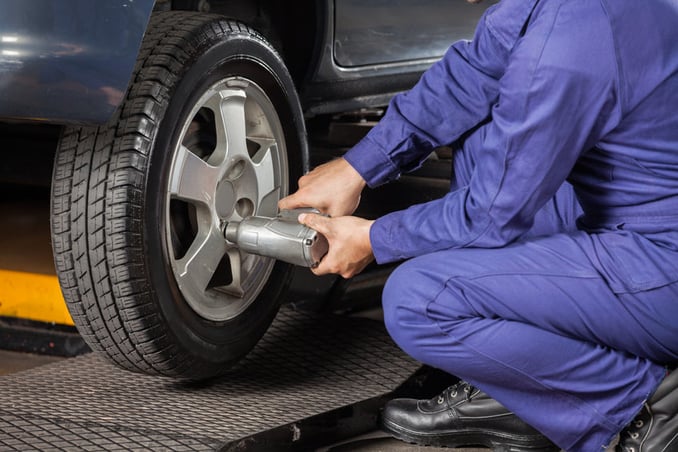Tire Solution: The Impact of Weather
When it comes to ensuring optimum performance and security on the roadway, understanding the effect of weather condition conditions on tire service is critical. GMC Tire Service. In this conversation, we will certainly explore the elaborate partnership between weather condition conditions and tire solution, dropping light on the importance of weather-specific tire maintenance practices and considerations.
Warm and Tire Performance
When subjected to heats, tires experience adjustments in efficiency that can dramatically affect lorry safety and handling. The warmth generated from long term driving or warm climate conditions triggers the tire rubber to soften, causing lowered tread life and enhanced wear. As the rubber ends up being softer, the tire's grasp when traveling lessens, impacting braking ranges and total traction. In extreme situations, too much warmth can also create tire blowouts, posing a severe safety and security risk to the car and its owners.

Winter Effects
Cold weather problems can have a considerable influence on tire efficiency and safety and security. As temperature levels decrease, tire rubber can solidify, leading to lowered grip on icy or snow-covered roads. In cold weather condition, tires may likewise shed air pressure more quickly, which can influence handling and fuel efficiency. In addition, chilly temperatures can trigger tire sidewalls to tense, enhancing the threat of damage from pits or other roadway risks.
To mitigate the effects of winter on tires, it is essential to on a regular basis inspect tire stress and inflate them to the maker's advised levels. Making use of winter or all-season tires designed for chilly climate problems can likewise enhance grip and hold on icy or snowy roads. Proper tire maintenance, consisting of regular examinations for wear and damages, ends up being much more important during colder months to make certain ideal efficiency and security.
Rainy Conditions Impact
Tires with damaged treads are a lot more susceptible to hydroplaning, where a layer of water builds up between the roadway and the tire surface area, leading to loss of grip. To check my reference battle this, continue reading this vehicle drivers need to regularly inspect their tires for adequate tread deepness and take into consideration investing in tires especially created for wet conditions.
In addition, wet weather condition can also reduce presence, making it testing for motorists to see the road in advance clearly (GMC Tire Service). In such conditions, it is vital to change driving speeds as necessary and maintain a safe following distance to enable for sudden quits. Appropriately inflated tires can additionally aid in keeping control on damp roads by giving better handling and grasp
Snow and Tire Security
When driving in snowy conditions, having the best tires can make a significant difference in safety and security and efficiency. Winter tires are created with unique rubber substances and walk patterns to offer far better grip on snow and ice compared to all-season tires.

It is crucial to comply this link with producer instructions when mounting and making use of tire chains to avoid damages to the tires and lorry. By choosing the ideal tires, maintaining correct rising cost of living, and taking into consideration added grip aids like tire chains, vehicle drivers can improve their security when navigating snow-covered roadways.
Weather-Related Tire Upkeep
Weather-related tire maintenance encompasses a variety of techniques aimed at ensuring optimal tire feature and longevity in various climate circumstances. One vital aspect of weather-related tire maintenance is tire pressure law. Examining tire tread routinely and changing tires when tread wear reaches a certain depth is crucial for preserving grip and security in negative weather.
Conclusion
To conclude, climate problems have a considerable influence on tire performance and safety. From warmth affecting tire stress and use to winter lowering traction, it is important to consider the climate when maintaining and making use of tires. Wet conditions can decrease grasp and result in hydroplaning, while snow can boost the threat of accidents if tires are not correctly outfitted. Weather-related tire upkeep is essential in making certain ideal efficiency and safety and security when driving.
In this discussion, we will discover the complex relationship between weather conditions and tire service, shedding light on the importance of weather-specific tire maintenance techniques and factors to consider.
